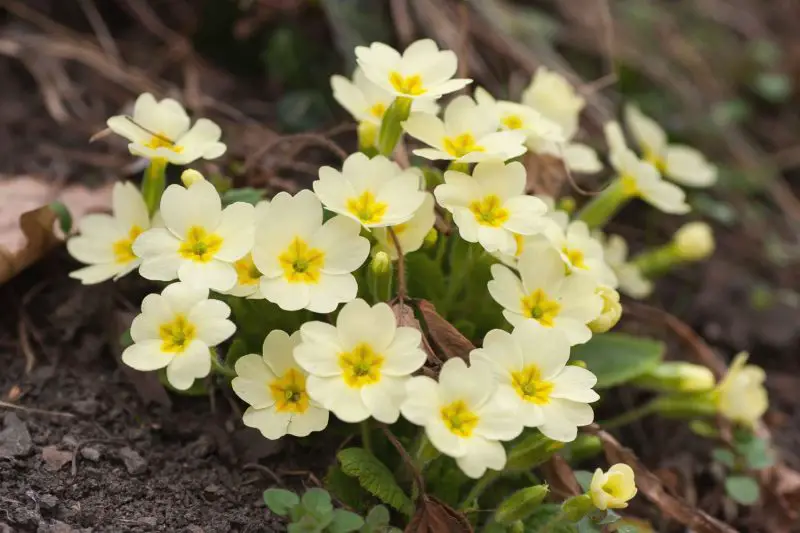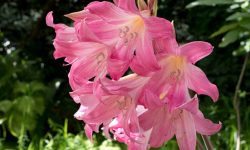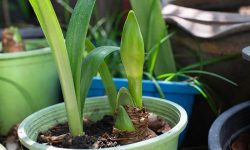Primroses are beloved spring flowers, bringing vibrant color and charm to gardens across the United States. Their cheerful blooms, ranging from soft pastels to bright yellows, signal the arrival of warmer days and uplift any landscape. Understanding how long primrose lasts and how to care for it ensures these delightful flowers remain healthy, vibrant, and long-lasting throughout the season.
Proper care plays a crucial role in extending the lifespan of primrose blooms. From choosing the right soil and sunlight to regular watering and timely deadheading, gardeners can maximize flowering periods. With attentive maintenance, primroses can flourish in beds, borders, or containers, creating a colorful and lively display. Enjoying their beauty for weeks on end becomes possible with simple, consistent seasonal care.
Understanding Primrose Bloom Cycle

Primroses have a distinctive bloom cycle that influences how long their flowers last. Most varieties begin flowering in early spring, with some cultivars extending into late spring or early summer. The cycle starts with the emergence of basal rosettes, from which flower stalks rise, producing vibrant blooms. Knowing the timing of bud formation and peak flowering helps gardeners plan care strategies to maximize bloom duration and maintain healthy plants throughout the season.
During the bloom cycle, individual flowers may last several days to a couple of weeks, depending on variety and environmental conditions. Weather plays a significant role in flower longevity. Cooler temperatures tend to prolong blooms, while excessive heat or direct sunlight can accelerate fading. Additionally, maintaining consistent moisture and avoiding plant stress during this period supports longer-lasting flowers. Regularly removing spent blooms encourages new bud development, helping the plant sustain a continuous display over several weeks.
Understanding the full bloom cycle allows gardeners to anticipate care needs and prevent premature decline. Timing fertilization, monitoring for pests, and adjusting watering schedules in alignment with flowering stages ensures optimal growth. By observing and responding to each phase of the primrose bloom cycle, gardeners can extend the visual appeal of these cheerful flowers. A thorough understanding of bloom patterns not only enhances garden aesthetics but also strengthens plant health, enabling primroses to thrive and deliver a vibrant, long-lasting spring display.
Optimal Soil and Sunlight for Long-Lasting Primrose
Choosing the right soil is essential for primrose longevity. Primroses thrive in well-draining, fertile soil rich in organic matter. Loamy soil with a slightly acidic to neutral pH provides ideal conditions for root development and nutrient uptake. Poorly drained or compacted soil can cause root rot and reduce bloom duration. Incorporating compost or aged manure improves soil structure, fertility, and moisture retention, supporting healthy growth.
Sunlight also plays a critical role in maintaining vibrant primrose flowers. These plants prefer partial shade to filtered sunlight, especially in warmer climates. Too much direct sunlight can scorch the leaves and fade flower colors, while insufficient light may reduce blooming. Morning sun with afternoon shade often provides the perfect balance, allowing the plant to photosynthesize effectively without stress. Adjusting plant placement based on seasonal sun patterns ensures optimal exposure throughout the growing season.
Combining appropriate soil and sunlight creates a strong foundation for long-lasting blooms. Healthy roots in fertile, well-drained soil absorb nutrients efficiently, while balanced light conditions promote continuous flowering. Gardeners should also monitor soil moisture and adjust watering practices to complement sunlight exposure. With proper attention to these environmental factors, primroses can maintain vibrant, colorful displays for weeks, delighting gardeners and enhancing outdoor spaces with cheerful, long-lasting flowers.
Watering and Moisture Management for Extended Blooming
Proper Watering Techniques
Maintaining consistent moisture is essential for primrose longevity. Newly planted primroses require gentle, regular watering to keep the soil evenly moist. Overwatering can lead to root rot, while underwatering stresses the plant, reducing bloom quality. Using a watering can or drip irrigation ensures precise moisture delivery without disturbing roots or seedlings. Mulching around the base helps retain soil moisture, reduces evaporation, and supports healthy root development. Additionally, mulch contributes organic matter as it decomposes, enhancing soil fertility and structure.
As primroses mature, they become slightly more drought-tolerant but still benefit from regular watering during dry spells. Observing soil moisture levels and adjusting watering frequency based on weather and soil type prevents plant stress. Proper hydration promotes strong roots, vibrant blooms, and overall resilience. Consistent care during flowering periods ensures that primroses maintain color, turgidity, and longevity. Gardeners who monitor moisture carefully will see an extended visual display in garden beds, borders, or containers, maximizing the plant’s aesthetic impact and overall health throughout the growing season.
Avoiding Overwatering and Water Stress
Primroses are sensitive to both overwatering and prolonged dryness. Excess water saturates the soil, depriving roots of oxygen and increasing the risk of fungal infections like root rot or leaf spot. Conversely, water stress causes wilting, leaf yellowing, and premature flower drop. Gardeners should strike a balance by watering when the top inch of soil feels dry and ensuring proper drainage. This careful approach prevents both stress and disease, supporting longer-lasting blooms.
Using mulch and proper soil preparation helps regulate moisture naturally. Organic mulch stabilizes soil temperature, conserves water, and reduces splash onto foliage, minimizing disease risk. Monitoring rainfall, container drainage, and seasonal changes allows gardeners to adjust irrigation accordingly. By avoiding extremes in moisture, primroses can sustain strong root systems, maximize nutrient uptake, and produce long-lasting flowers. This attentive water management enhances both plant vitality and garden beauty, ensuring vibrant, resilient blooms throughout the entire flowering season.
Fertilization and Nutrient Management for Longer Blooms
Choosing the Right Fertilizer
Proper fertilization is essential for extending the lifespan of primrose blooms. Using a balanced, slow-release fertilizer ensures plants receive a steady supply of nutrients throughout the growing season. Primroses benefit from fertilizers rich in phosphorus, which promotes strong root development and vibrant flowering. Nitrogen should be applied cautiously, as excessive amounts can encourage leafy growth rather than blooms. Over-fertilization can also weaken plants and make them more susceptible to pests and diseases. Following label instructions carefully ensures the right nutrient balance and prevents damage to both plants and soil.
Applying fertilizer at the base of the plant helps prevent foliar burn and allows nutrients to reach roots efficiently. Organic options, such as compost, well-rotted manure, or leaf mold, provide essential minerals while improving soil structure and water retention. Combining organic matter with commercial fertilizers ensures a consistent nutrient supply, supporting continuous flowering and robust growth. Regular monitoring of plant health, along with proper feeding, encourages longer-lasting, more vibrant blooms and enhances the overall resilience of primroses against environmental stressors, creating a thriving and visually appealing garden display.
Timing and Frequency of Feeding
The timing of fertilization plays a critical role in prolonging primrose blooms. Feeding plants at the start of the growing season, typically in early spring, stimulates early bud formation and encourages vigorous growth. Supplemental feedings every four to six weeks during peak flowering help maintain nutrient levels, supporting continuous flowering and healthy foliage. Adjusting the frequency of feeding based on soil fertility, rainfall, and plant response ensures that nutrients are provided when most needed, without overloading the soil.
Observing plant health provides important cues for adjusting feeding schedules. Yellowing leaves, stunted growth, or reduced blooms may indicate nutrient deficiencies, while overly lush foliage can signal excessive feeding. Using this feedback, gardeners can fine-tune fertilizer application to balance growth and flowering. Combining careful timing, proper frequency, and appropriate fertilizer types maximizes bloom duration, improves flower size and color, and strengthens overall plant resilience. Thoughtful nutrient management lays the foundation for vibrant, long-lasting primrose displays, enhancing both garden beauty and plant vitality throughout the season.
Deadheading and Pruning Techniques to Extend Blooming
Deadheading Spent Blooms
Removing spent primrose flowers, known as deadheading, encourages the plant to produce new blooms rather than diverting energy to seed production. Gently pinch or snip off faded flowers at the base of the stem, taking care not to damage surrounding leaves or stems. This practice maintains a neat appearance, improves air circulation around the plant, and reduces the likelihood of fungal infections such as powdery mildew. Deadheading is especially important in densely planted beds or containers, where airflow is limited and disease risk is higher.
Consistent removal of old blooms also extends the flowering period significantly. By preventing seed formation, the plant reallocates energy into developing fresh buds and maintaining overall vigor. Deadheading enhances the aesthetic appeal of garden beds, borders, and container arrangements, keeping colors vibrant throughout the season. Gardeners who adopt a regular deadheading routine can enjoy continuous displays of primrose flowers, maintain healthier foliage, and support strong plant structure. This simple but crucial practice is key to maximizing bloom longevity and ensuring the garden remains lush, colorful, and visually pleasing for weeks longer.
Strategic Pruning for Health and Longevity
Pruning primrose foliage is essential for maintaining plant health and promoting extended blooming. Removing damaged, yellowing, or overcrowded leaves allows light and air to reach the inner parts of the plant. Improved airflow reduces the risk of fungal infections and other diseases, keeping the plant vigorous and resilient. Proper pruning encourages the plant to focus energy on producing healthy flowers instead of excess foliage.
Strategic pruning should be performed carefully and selectively to avoid weakening the plant. Cutting back old or damaged growth stimulates new shoots and improves overall plant structure. Combining pruning with regular deadheading ensures that primroses remain attractive, healthy, and productive. Consistent maintenance supports long-lasting blooms, enhances flower size and color, and strengthens the plant against environmental stressors. By adopting a thoughtful pruning routine, gardeners can enjoy lush, vibrant primrose displays throughout the season while preserving plant vitality and creating a well-maintained, visually appealing garden.
Pest and Disease Management for Longer-Lasting Primrose
Common Pests and How to Manage Them
Primroses can attract a variety of pests that threaten plant health and bloom longevity. Aphids feed on sap, causing leaf curling and sticky honeydew, which can encourage mold growth. Slugs and snails chew holes in leaves and buds, while spider mites create fine webbing and yellow speckling on foliage. Thrips and caterpillars may also occasionally damage flowers. Regular inspections, especially on the undersides of leaves and around the base, help detect infestations early before serious damage occurs. Maintaining good garden hygiene and spacing plants appropriately reduces pest-friendly environments.
Effective management combines several approaches. Manual removal or a strong water spray can control minor infestations, while eco-friendly treatments like neem oil or insecticidal soap limit damage without harming beneficial insects. Introducing natural predators, such as ladybugs or lacewings, helps control aphid populations. Ensuring proper watering, pruning, and nutrient management strengthens plant resilience, making primroses less susceptible to pests. By combining early detection, preventive measures, and natural interventions, gardeners can maintain healthy, vigorous primroses with extended, vibrant blooms throughout the season.
Preventing Fungal Diseases
Primroses are prone to fungal diseases such as powdery mildew, leaf spot, and root rot, especially when grown in damp or poorly ventilated conditions. Crowded planting and excessive moisture create ideal environments for pathogen growth. Observing plants regularly and removing diseased or yellowing leaves prevents the spread of infections and keeps the garden healthy. Providing adequate spacing between plants enhances airflow and reduces humidity around foliage.
Cultural practices play a key role in prevention. Avoid overhead watering, which can splash soil-borne pathogens onto leaves, and apply mulch around the base to maintain soil moisture while keeping foliage dry. Selecting disease-resistant varieties and rotating planting locations further reduces risks. Timely pruning of old or damaged growth promotes plant vigor and encourages strong new shoots less susceptible to infection. Combining these preventive measures ensures primroses remain healthy, vibrant, and productive, extending the flowering period and creating a more visually appealing and resilient garden throughout the season.
Overwintering Primrose for Early Spring Blooms
Successfully overwintering primroses ensures vibrant, early spring blooms and a healthy start to the growing season. As temperatures drop, it is crucial to protect both potted and garden-planted primroses from frost and extreme cold. For plants in containers, move them to a sheltered location such as a garage, greenhouse, or unheated indoor space with bright, indirect light. Garden beds can be insulated with a thick layer of mulch, straw, or evergreen boughs to protect roots from freezing temperatures. Avoid placing plants in areas prone to waterlogging, as frozen soil can exacerbate root rot.
Watering during winter requires careful attention. While primroses need less moisture during dormancy, it is important to prevent soil from drying out completely. Light watering, only when the top inch of soil feels dry, maintains root health without encouraging fungal growth. Regularly checking plants for signs of stress, such as yellowing leaves or shriveled roots, allows for early intervention and reduces losses. Removing dead or damaged foliage before winter also minimizes disease risk and encourages a stronger recovery in spring.
Proper overwintering practices not only preserve plant health but also stimulate vigorous growth and flower production when temperatures rise. Once spring arrives, gradually acclimate primroses to outdoor conditions before resuming regular watering and fertilization. By providing consistent care through the colder months, gardeners can enjoy longer-lasting, abundant blooms, and maintain resilient, attractive primrose plants year after year, ensuring a colorful, early-season display in garden beds, borders, or containers.
Companion Planting with Primrose
Primrose thrives not only as a standalone plant but also as part of carefully designed garden compositions. Choosing companion plants can enhance primrose blooms, improve soil health, and reduce pest and disease issues. Ideal companions include shade-loving perennials such as ferns, hostas, and lungwort, which complement the low-growing primrose with contrasting foliage and textures. Combining primrose with early-blooming bulbs, like daffodils or tulips, creates layered color displays that transition beautifully throughout spring.
In addition to aesthetic benefits, companion planting offers functional advantages. Certain companions, such as marigolds or nasturtiums, naturally repel pests like aphids and slugs, which commonly affect primrose. Deep-rooted plants nearby can improve soil structure and nutrient availability, benefiting primrose roots. Conversely, it is important to avoid planting aggressive or fast-spreading species too close, as they can compete for water, nutrients, and light, ultimately reducing primrose vigor and bloom duration. Strategic spacing and thoughtful combinations ensure harmonious growth and maximize flowering potential.
By integrating primrose into mixed garden beds or borders with compatible species, gardeners can create visually appealing and ecologically balanced landscapes. Companion planting also encourages beneficial insects and pollinators, enhancing overall garden health. Observing plant interactions and adjusting placements as needed allows primrose to flourish alongside companions, producing longer-lasting, more vibrant blooms. With careful planning and ongoing maintenance, companion planting transforms primrose from a single-season highlight into a dynamic, multi-species garden display, combining beauty, resilience, and functionality.
Using Primrose in Containers and Indoor Gardens
Primrose adapts well to container gardening, making it ideal for patios, balconies, and indoor spaces. Growing primrose in pots allows gardeners to control soil quality, moisture levels, and sunlight exposure more precisely than in-ground planting. Containers should have good drainage holes and be filled with rich, well-draining potting soil. Choosing the right pot size ensures ample space for roots to develop, supporting robust growth and longer-lasting blooms.
Indoor placement requires bright, indirect light to encourage flowering without scorching foliage. East- or north-facing windows are typically ideal. Maintaining moderate humidity and avoiding dry, heated air prevents leaf and flower desiccation. Regularly rotating pots ensures even light distribution, reducing leggy growth. Water consistently, keeping the soil moist but not soggy, and apply a balanced, diluted fertilizer every few weeks during the active growing season to promote healthy blooms.
Container-grown primrose can also be combined with other shade-loving or flowering plants for mixed displays, adding texture and color to indoor or outdoor spaces. Seasonal repotting every 1–2 years refreshes soil nutrients and prevents root binding. Deadheading spent blooms and removing yellowing leaves ensures the plant focuses energy on producing new flowers. By providing proper care, gardeners can enjoy primrose’s vibrant, cheerful flowers indoors and in limited spaces, extending the blooming period and creating versatile, eye-catching container gardens.
Environmental Factors Affecting Bloom Longevity
The longevity of primrose blooms is strongly influenced by environmental conditions. Light exposure plays a crucial role, as primroses thrive in bright, indirect sunlight. Too much direct sun, especially in hot climates, can cause flower fading and leaf scorch, reducing overall bloom duration. Conversely, insufficient light may lead to weak growth and fewer flowers. Balancing sunlight ensures primroses maintain vibrant, long-lasting blooms throughout the season.
Temperature and humidity also impact bloom longevity. Primroses prefer cool to moderate temperatures and consistent moisture. Excessive heat or prolonged dry conditions can stress plants, causing premature wilting and shorter flowering periods. Maintaining moderate humidity, either through misting or grouping plants together, helps prevent desiccation of blooms and supports sustained growth. Protecting plants from harsh winds or sudden temperature fluctuations further minimizes stress and preserves floral quality.
Soil quality and drainage are additional factors affecting bloom performance. Well-draining, nutrient-rich soil encourages strong root development, which supports sustained flower production. Compacted or overly wet soil can lead to root rot, stunted growth, and early flower drop. Regular feeding with balanced fertilizers and monitoring soil moisture ensures primroses receive adequate nutrition and hydration. By carefully managing light, temperature, humidity, and soil conditions, gardeners can maximize primrose bloom longevity, enjoying continuous, vibrant flowers for an extended period.
FAQ About How Long Primrose Lasts
How long do primrose blooms typically last?
Primrose flowers usually last between four to six weeks under ideal conditions. Factors such as sunlight, soil quality, watering, and temperature affect bloom duration. Proper care, including deadheading spent flowers, consistent moisture, and avoiding extreme heat, helps extend flowering periods and maintain vibrant, long-lasting blooms throughout the season.
Can primroses bloom more than once in a season?
Yes, many primrose varieties can produce multiple blooms if conditions are favorable. Regular deadheading, proper fertilization, and consistent watering encourage the plant to redirect energy toward new flower production. Maintaining healthy leaves and avoiding stress factors such as pests or harsh sunlight also supports successive bloom cycles within a single growing season.
How should I water primroses to prolong bloom life?
Primroses prefer evenly moist soil without becoming waterlogged. Use gentle watering techniques, such as a watering can or drip system, to avoid disturbing roots or causing fungal growth. During hot or dry periods, increase watering frequency while monitoring soil moisture. Proper hydration ensures healthy growth and longer-lasting flowers.
What fertilization practices help primroses bloom longer?
Applying a balanced, slow-release fertilizer promotes sustained energy for flowering. Fertilizers rich in phosphorus support root development and vibrant blooms. Organic options like compost enhance soil structure and nutrient availability. Avoid over-fertilization, which can favor leaf growth over flowers. Timely feeding extends bloom longevity and overall plant vitality.
How can I protect primrose blooms from pests and diseases?
Regularly inspect plants for aphids, slugs, and spider mites. Employ eco-friendly treatments like neem oil or insecticidal soap. Introducing beneficial insects, such as ladybugs, helps control pest populations. Maintaining healthy plants through proper watering, fertilization, and pruning strengthens resistance, reducing stress and prolonging flower lifespan.
Conclusion
Understanding how long primrose lasts allows gardeners to maximize its vibrant blooms and maintain a healthy, thriving garden. By providing proper sunlight, balanced watering, and nutrient-rich soil, plants remain strong and produce flowers for extended periods. Regular deadheading, pest management, and seasonal care further enhance bloom longevity. Incorporating companion planting and mindful garden design supports both aesthetics and plant health. With consistent attention and care, primroses can brighten spaces for weeks, offering cheerful color and lush foliage. Thoughtful cultivation ensures these delightful flowers continue to flourish year after year.






